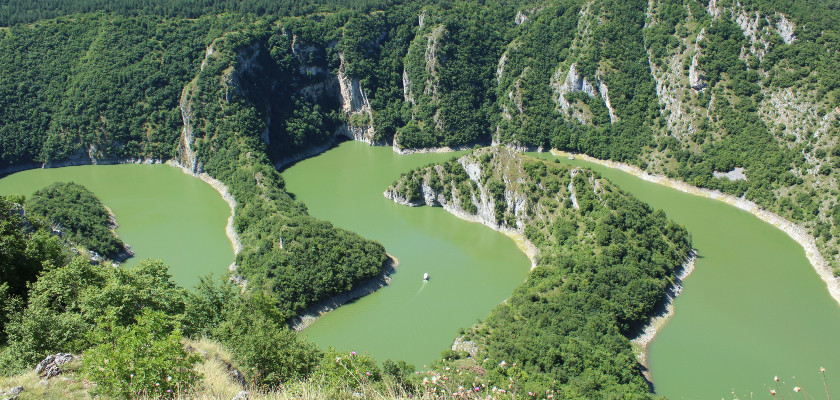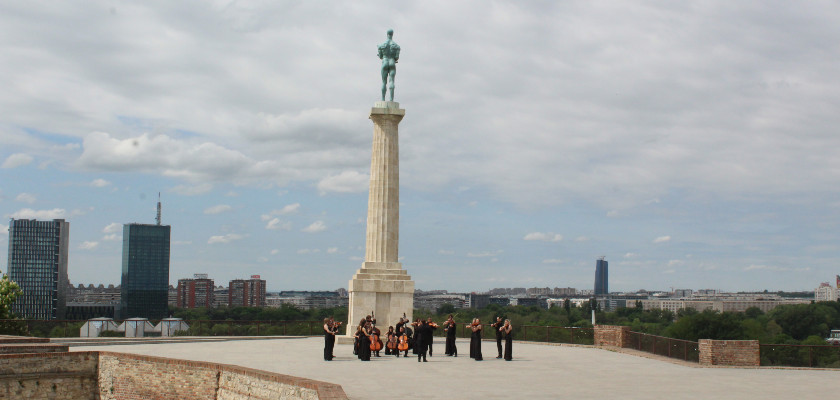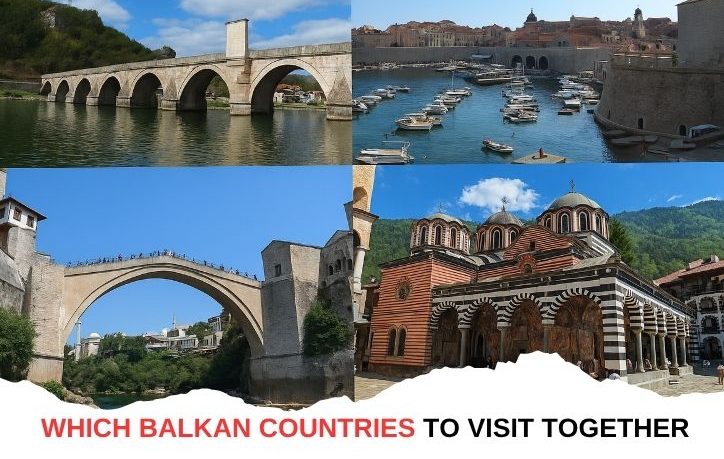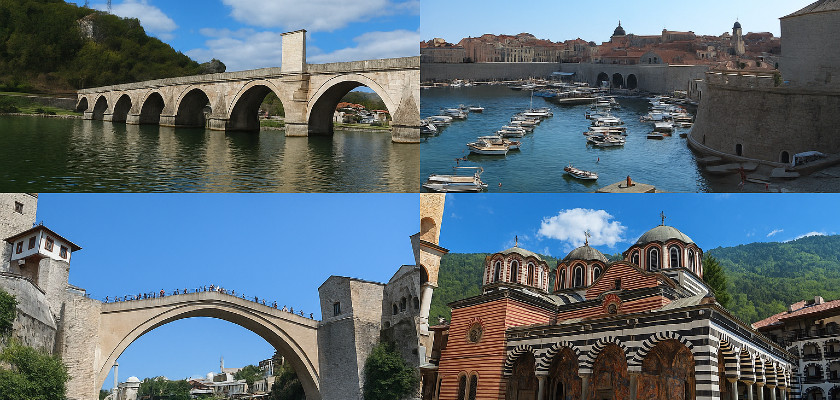Which Balkan Countries to Visit Together (and Why These Make Sense)
Discover the most logical and rewarding country combinations for your Balkan trip — from Adriatic coast routes to authentic inland journeys. Local insight for smart, stress-free travel.
If you look at a map, the Balkans seem small. But once you start exploring, you quickly realize — distances are short, yet differences are immense. Language, religion, architecture, and even rhythm of life change within a few hours’ drive.
That’s why combining the right countries matters. The best itineraries aren’t about “covering as many borders as possible,” but about finding logical continuity — countries that share enough to feel connected, yet differ enough to keep the journey engaging.
🇸🇮🇭🇷🇲🇪 Adriatic Heritage: Slovenia, Croatia & Montenegro

This route follows a single coastline, yet offers three distinct identities — a gradual shift from the Alpine world to the Mediterranean south.
- Slovenia introduces order, calm, and alpine clarity — small distances, tidy towns, eco-friendly spirit.
- Croatia carries that sense of Central Europe to the sea, with Venetian towns and Roman heritage along an endless coastline.
- Montenegro feels like the untamed south — dramatic fjords, steep mountains, and a slower Mediterranean rhythm.
All three share a common Adriatic heritage shaped by centuries under the Venetian Republic. Slovenia and Croatia are EU/Schengen; Montenegro is not, but uses the euro unilaterally. Roads are generally good along the corridor, while Montenegrin mountain sections are slower and scenic rather than fast.
Best for: coastal scenery, UNESCO towns, wine, and culture — with minimal border formalities.
🇷🇸🇧🇦 The Authentic Heart of the Balkans: Serbia & Bosnia-Herzegovina

This is where the “real” Balkans live — where East meets West in daily life. Serbia and Bosnia share a common language and similar traditions, yet differ in religion, history, and tone. Both countries are outside the EU, which many travelers find refreshingly “unstandardized”.
Route logic is tight and rewarding:
- Belgrade → Tara National Park → Drvengrad → Višegrad → Sarajevo, with optional extensions to Mostar or Trebinje.
Expect hearty food, strong coffee, and hospitality that often feels like friendship.
Need border or driving details? See our post Crossing Balkan Borders Without Stress.
🇷🇴🇧🇬 Crossroads of East and North: Romania & Bulgaria

A logical pair divided by the Danube, united by practical travel flow (both are EU & Schengen) and access to the Black Sea, yet culturally distinct.
- Romania: a Romance-language nation with Dacian/Roman roots, Saxon towns, fortified churches, and Transylvanian landscapes that read more Central European.
- Bulgaria: Slavic language, Orthodox Christianity, Cyrillic script, and clear Ottoman influences in cuisine and urban fabric.
Traveling through both feels like moving along Europe’s cultural axis — from Latin to Slavic, from Gothic steeples to monastery domes. Add a detour via Serbia’s Iron Gate Gorge if you like river scenery.
🇷🇸🇧🇦🇲🇪🇦🇱🇲🇰 The Extended Balkan Loop

With two weeks or more, this loop delivers the region’s full emotional range. Start in Belgrade or Skopje and connect:
- Sarajevo & Mostar — layered histories and living memory,
- Montenegro — wild mountains and coastal villages,
- Albania — energetic, Mediterranean, rapidly changing,
- Ohrid & Skopje — calm lakeside beauty and characterful capital.
Frequent borders, straightforward formalities. It’s a trip about variety over depth — perfect for a first exploration.
🇷🇸🇭🇷🇸🇮🇭🇺 Northern Circuit: Serbia, Croatia, Slovenia & Hungary

Follow the historical footprint of the Austro-Hungarian Empire where Central Europe meets the Balkans. Trace it through architecture, wine, and mentality — from Budapest to Zagreb, Ljubljana, and Belgrade.
All but Serbia are EU members; trains and highways make this a comfortable, structured city-and-wine journey with short hops and dense culture.
How to Choose What’s Right for You
- Do you want variety or depth?
- Coastal relaxation or inland authenticity?
- Focus on history, nature, or local life?
The Balkans are small but don’t reward haste. A well-chosen combination of two or three countries tells a richer story than a checklist of ten.
Plan Your Balkan Trip Without Stress
If these combinations sound like your kind of journey, explore our tailor-made itineraries designed by locals who actually live here and guide these routes personally.
❓ Frequently Asked Questions About Planning a Balkan Trip
1) How many countries can I realistically visit on one Balkan trip?
For most travelers, two or three countries are ideal. Terrain, slower roads, and occasional border waits can stretch travel time. With 10–14 days, choose fewer countries and richer experiences.
2) Do I need visas to travel between Balkan countries?
Visitors from the EU, UK, USA, Canada, and Australia generally travel visa-free across most of the region for up to 90 days. If you mix EU and non-EU countries (e.g., Croatia + Serbia + Bosnia), check each rule. Serbia, Bosnia, Montenegro, Albania, and North Macedonia are not EU members. See Crossing Balkan Borders Without Stress for details.
3) Is it easy to drive between Balkan countries?
Mostly yes — major corridors in Slovenia, Croatia, Serbia, and Hungary have modern highways. Montenegro and Bosnia offer mountain roads that are slower but scenic. Carry passport, insurance (green card), and some cash for tolls/fuel.
4) What’s the best time of year for a Balkan multi-country tour?
May–June and September–October bring mild weather and fewer crowds. July–August can be hot with busy coastal roads. Winter suits city & spa trips and ski resorts in Serbia, Bulgaria, and Slovenia.
5) Can I travel independently or should I book a guided tour?
Independent travel works, but a private guided tour saves time and stress on multi-border routes or rural legs. Local guides know faster crossings, parking tricks in historic centers, and reliable off-season restaurants.
6) What’s the most scenic Balkan route?
Depends on your style:
— For coastline & history: Slovenia, Croatia & Montenegro
— For culture & authenticity: Serbia & Bosnia
— For hidden gems: Romania & Bulgaria

About the Author
Miljan Miljević is the founder of Serbian Private Tours. Since 2013, he has been curating private itineraries across the Balkans — focusing on personalized approach and authentic local experiences.


